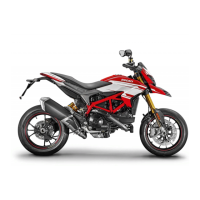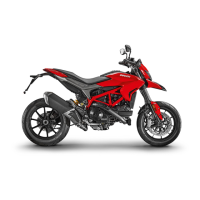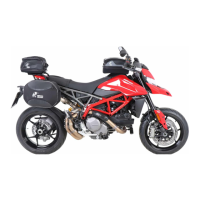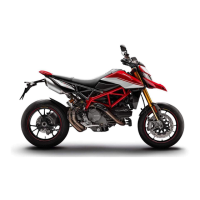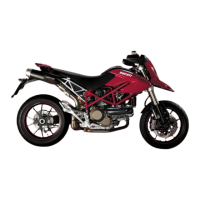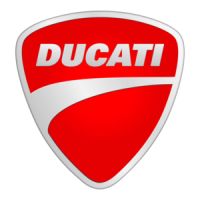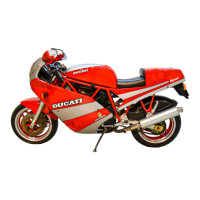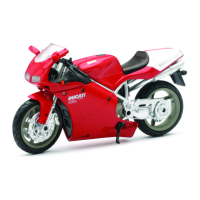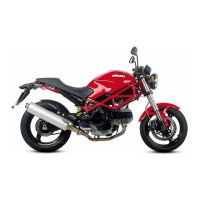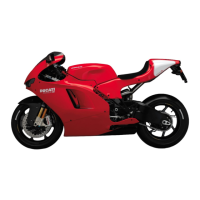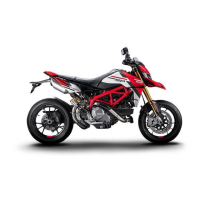
Do you have a question about the Ducati Hyperstrada and is the answer not in the manual?
| Transmission | 6-speed |
|---|---|
| Frame | Tubular steel Trellis frame |
| Exhaust | 2-1-2 system with catalytic converter and 2 lambda probes |
| Front Suspension | 43 mm upside-down forks |
| Rear Suspension | Progressive linkage with adjustable Sachs monoshock |
| Front Brake | 2 x 320 mm semi-floating discs, radially mounted Brembo monobloc 4-piston calipers |
| Rear Brake | 245 mm disc, 2-piston caliper |
| Fuel Tank Capacity | 16 liters (4.2 US gal) |
| Fuel Injection | Electronic fuel injection, 53 mm throttle bodies |
Explains hazard symbols and general safety precautions.
Specifies acceptable uses and rider responsibilities.
Details essential protective clothing and rider skill importance.
Key operations for rider safety and motorcycle performance.
Instructions for safe refueling and managing motorcycle load.
Covers hazards from engine oil, brake fluid, coolant, and battery.
Location and importance of VIN and engine number for identification.
Overview of the instrument panel's display elements and operational functions.
Details primary data, menus, and parameter setting on the LCD screen.
Explains speed, RPM, DTC, ABS, and service indicators.
Lists and describes functions like Odometer, Trip Meters, Consumption, Temp, and Clock.
Covers Riding Mode setup, error, and LAP function status indications.
Glossary of terms and explanation of technologies like ABS, DTC, RbW.
Explains the purpose and operation of the control buttons on the handlebar.
Customizing riding modes, DTC, ABS, Engine power, and default settings.
Adjusting dashboard backlighting, LAP function, clock, battery voltage, and RPM display.
Changing units for speed, temperature, and consumption displays.
Explains the antitheft immobilizer system, its function, and key information.
Procedures for activating, changing, and entering the PIN code for vehicle release.
Manages headlight switching for current consumption reduction.
Explains turn signal operation, automatic reset, and hazard light activation.
Identifies and describes the location and function of all motorcycle controls.
Explains ignition, switches, clutch, and throttle operations.
Details brake pedals, gear pedal, and their adjustment procedures.
Identifies major components and their locations, including fueling and storage access.
Details helmet cable, side stand, power sockets, central stand, and pannier systems.
Guidelines for the initial break-in period and essential safety checks.
Instructions for starting, moving, braking, stopping, parking, and refueling.
Coolant, brake fluid, clutch fluid, and engine oil level checks.
Brake pad checks, battery charging, and winter storage.
Drive chain checks, lubrication, and headlight/indicator bulb replacement.
Tyre pressure, tread depth, spark plug maintenance, and motorcycle cleaning.
Tables detailing maintenance operations for dealers and customers.
Specifications for vehicle weight, dimensions, and fluid capacities.
Technical details of the engine, timing, performance data, and fuel system.
Specifications for brakes, transmission, frame, wheels, tyres, and suspensions.
Information on the electrical system components, wiring, and fuse box layout.
A key to identify components in the electrical system wiring diagram.
